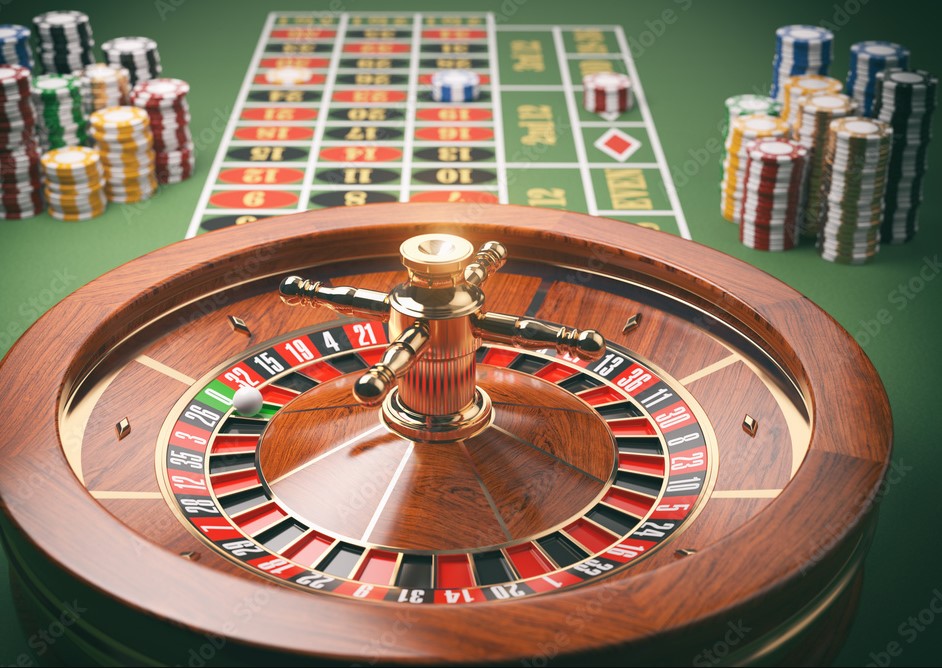Casino Roulette Wheel: Roulette is one of the most iconic and widely recognized casino games in the world. With its spinning wheel, bouncing ball, and array of numbers, it captures the excitement and unpredictability that defines gambling. A fundamental aspect of this game is the number of slots—or pockets—on the wheel, which determines the odds, payouts, and house edge. But how many slots are there on a roulette wheel? The answer varies depending on the version of the game being played.
Casino Roulette Wheel: In this article, we’ll explore the different types of roulette wheels, compare their features, analyze the odds associated with each, and offer insight into how the number of slots affects the gameplay and strategy.
Casino Roulette Wheel: Understanding the Roulette Wheel
Casino Roulette Wheel: A roulette wheel consists of numbered pockets that alternate between red and black, except for the green “zero” slots. These pockets are arranged in a seemingly random order around the wheel’s perimeter. When the dealer spins the wheel and releases the ball, it eventually lands in one of these pockets, determining the winning number and color.
The two most common types of roulette are:
- European Roulette
- American Roulette
Casino Roulette Wheel: Some casinos also offer a third variant called French Roulette, which is very similar to the European version but with slightly different rules.
Number of Slots in Each Version
Casino Roulette Wheel: Let’s take a closer look at how many slots each version contains and how they differ.
Number of Pockets in Each Roulette Wheel Version
| Roulette Type | Total Slots | Numbered Slots | Zeros | Color Distribution |
|---|---|---|---|---|
| European Roulette | 37 | 1 to 36 | 1 (0) | 18 Red, 18 Black, 1 Green |
| American Roulette | 38 | 1 to 36 | 2 (0 and 00) | 18 Red, 18 Black, 2 Green |
| French Roulette | 37 | 1 to 36 | 1 (0) | 18 Red, 18 Black, 1 Green |
Casino Roulette Wheel: As the table shows, the European and French wheels have 37 slots, while the American wheel has 38 slots. The extra slot on the American wheel—labeled “00”—gives the house a higher edge.
How the Number of Slots Affects Odds
Casino Roulette Wheel: The number of slots directly influences the probability of landing on any specific number. The more slots there are, the lower the odds of any one specific number being the winner.
Probability of Winning a Straight-Up Bet (Single Number)
| Roulette Type | Number of Slots | Winning Probability | House Edge |
|---|---|---|---|
| European Roulette | 37 | 1/37 ≈ 2.70% | 2.70% |
| American Roulette | 38 | 1/38 ≈ 2.63% | 5.26% |
| French Roulette | 37 | 1/37 ≈ 2.70% | 1.35% (with La Partage/En Prison) |
Casino Roulette Wheel: A straight-up bet is when a player bets on a single number. As shown, the American version has a slightly lower chance of winning this bet due to the additional slot but has a significantly higher house edge because payouts do not increase with the number of slots.
Slot Arrangement: Not Just a Number Game
Casino Roulette Wheel: Interestingly, the numbers on the wheel are not arranged in numerical order. Instead, they are placed in a specific sequence designed to create balance and randomness. The arrangement differs between American and European wheels.
Comparison of Number Sequences
| Feature | European Wheel Order | American Wheel Order |
|---|---|---|
| Sequence Pattern | Alternates odd/even and red/black, more balanced | Less balanced, includes double zero (00) |
| Zero Slot Location | Single green 0 opposite 5 | 0 and 00 are directly opposite each other |
| Number Spread | More symmetrical | Less symmetrical |
Casino Roulette Wheel: This arrangement affects how people place “section bets” or “neighbors” bets, especially in European roulette, where players often bet on numbers adjacent to each other on the wheel.
House Edge: The Casino’s Advantage
The house edge refers to the statistical advantage that the casino holds over the player. The more zero slots on the wheel, the higher the house edge.
- European Roulette: With only one zero, the house edge is about 2.70%.
- American Roulette: The addition of the “00” increases the house edge to 5.26%.
- French Roulette: This variant offers La Partage or En Prison rules, which reduce the house edge to about 1.35% for even-money bets.
So, while the number of slots may seem like a small difference, it can significantly impact your long-term results.
Slot Colors and Betting Strategy
Each slot on the wheel is also assigned a color—red, black, or green. Here’s how that breaks down:
Color Distribution
| Color | European Roulette | American Roulette |
|---|---|---|
| Red | 18 | 18 |
| Black | 18 | 18 |
| Green | 1 (0) | 2 (0, 00) |
Many players enjoy placing bets on color (e.g., red or black), which gives nearly 50/50 odds (excluding the green zeros). The green slots are where the casino edge comes from.
Variants with Unique Slot Counts
While the standard versions dominate, there are also modern roulette variants introduced in online and novelty casino games that may feature additional slots, such as:
- Triple Zero Roulette: Features an additional “000” pocket, totaling 39 slots. House edge climbs to 7.69%.
- Mini Roulette: Has only 13 slots, numbered 0 to 12. Odds are different, and the house edge varies significantly.
These versions are typically found in online casinos or specialty tables and are designed to add new excitement, but often at the cost of worse odds for the player.
Why Slot Count Matters
- European and French Roulette (37 slots) offer better odds for players.
- American Roulette (38 slots) increases the house edge and slightly reduces winning chances.
- Additional slots in novelty games typically increase the house’s advantage even more.
Summary Comparison
| Feature | European | American | French | Triple Zero |
|---|---|---|---|---|
| Total Slots | 37 | 38 | 37 | 39 |
| Zero Pockets | 1 | 2 | 1 | 3 |
| House Edge | 2.70% | 5.26% | 1.35%* | 7.69% |
| Best for Players? | ✔️ | ❌ | ✔️ | ❌ |
*French roulette’s lower edge applies only to even-money bets with special rules.
So next time you sit at a roulette table or log in to an online game, take a moment to count those green pockets. That simple difference could be the line between a smart bet and a risky one.


